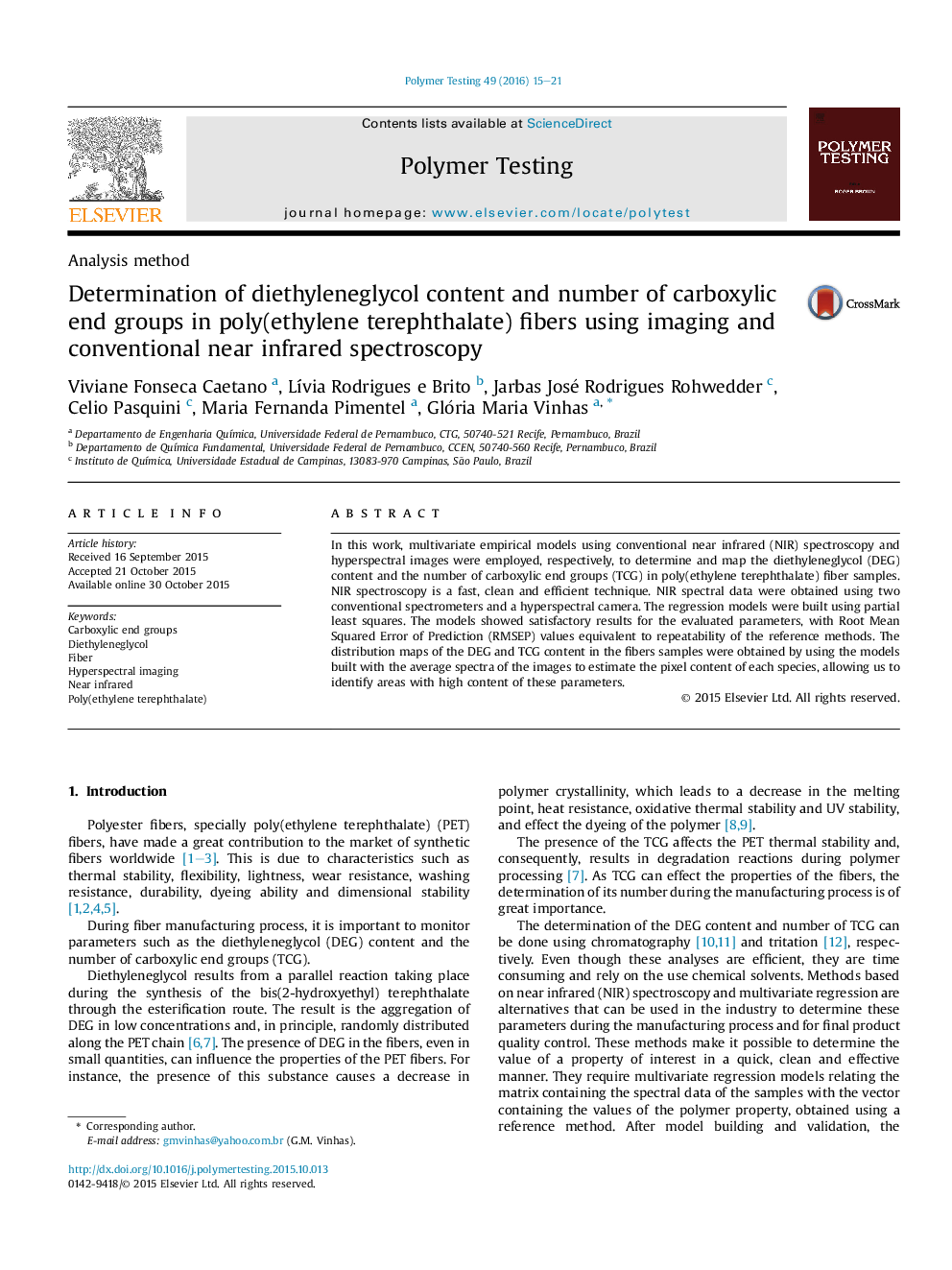| Article ID | Journal | Published Year | Pages | File Type |
|---|---|---|---|---|
| 5205993 | Polymer Testing | 2016 | 7 Pages |
Abstract
In this work, multivariate empirical models using conventional near infrared (NIR) spectroscopy and hyperspectral images were employed, respectively, to determine and map the diethyleneglycol (DEG) content and the number of carboxylic end groups (TCG) in poly(ethylene terephthalate) fiber samples. NIR spectroscopy is a fast, clean and efficient technique. NIR spectral data were obtained using two conventional spectrometers and a hyperspectral camera. The regression models were built using partial least squares. The models showed satisfactory results for the evaluated parameters, with Root Mean Squared Error of Prediction (RMSEP) values equivalent to repeatability of the reference methods. The distribution maps of the DEG and TCG content in the fibers samples were obtained by using the models built with the average spectra of the images to estimate the pixel content of each species, allowing us to identify areas with high content of these parameters.
Related Topics
Physical Sciences and Engineering
Chemistry
Organic Chemistry
Authors
Viviane Fonseca Caetano, LÃvia Rodrigues e Brito, Jarbas José Rodrigues Rohwedder, Celio Pasquini, Maria Fernanda Pimentel, Glória Maria Vinhas,
